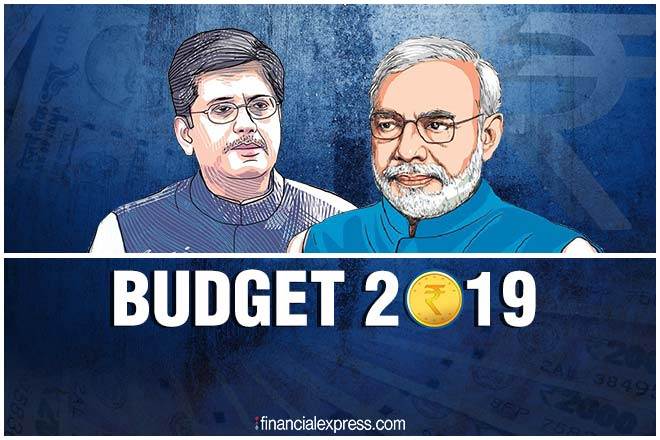Budget 2019: A day ahead of the crucial Budget day, speculations are rife that the Narendra Modi government may counter opposition leader Rahul Gandhi’s minimum income guarantee poll promise to poor with Universal Basic Income (UBI) — an old idea brought back to the limelight two years ago by former Chief Economic Advisor (CEA) Arvind Subramanian.
However, many policy experts are not thrilled with the idea, given the huge cost to government’s coffers and many obstacles in the way of implementing it. “It is mere poll rhetoric,” Madan Sabnavis, Chief Economist of Care Ratings told Financial Express Online, detailing several aspects of carrying out such a plan.
But before that, let’s look at how tomorrow’s budget could get impacted, should the government announce UBI for people below the poverty line, if not for all. (For a moment set aside the argument that the income support should be universal and everyone is entitled to it just by the virtue of being a citizen, as argued by Subramanian).
The impact on Budget:
As per NSS 68th round data in 2011-12, the total number of estimated poor is 24.7 crore. Dr Sridhar Kundu, who is a Senior Research Officer at Centre for Budget and Government Accountability calculated how each Rs 1,000 income support per year would impact the budget. At only Rs 6,000 per year, the fiscal deficit stands a chance of breaching 4% of the GDP-mark.
This is just one-third of the proposed income support of Rs 18,000 per year, or Rs 1,500 per month by Rahul Gandhi. At Rs 18,000 per year, the cost to the government would be about Rs 4.45 lakh crore.

The argument for providing income support is to withdraw all kinds of subsidies being granted to people in order to fiscally manage the cost. In the year 2018-19, the government estimates its subsidy budget to rise to Rs 2.93 lakh crore. This might help balance the fiscal position; however, it still isn’t practical.
Good only on paper:
Sabnavis, who is of the opinion that the idea of UBI seems to be a good substitution for physical schemes on paper, practically, it is not a feasible idea.
“It is obviously not possible that the government says I will give you a certain income but I won’t give you free education, healthcare, or cheap grain…But to look back at the major role of the government, it is to create social infrastructure — provide healthcare, create jobs via MGNREGA or other schemes, maintain buffer stock procurement etc.
The moment you say you are eliminating food subsidy, it means you will not procure, which will result in farmers suffering. For UBI to be successful, you need to overhaul the entire institutional setup, you need to, let’s say, abandon Food Corporation of India,” Sabnavis added.
One of the major criticisms of UBI is also that it is pushing for one-size-fits-all policy for a diverse and federal country like India. The Mid-Day meal scheme has been a huge success in many states. If it were to be replaced with cash, the chances are people would stop sending their children to school, Sabnavis argues.
The elephant in the room:
However, the biggest elephant in the room is lack of proper infrastructure to completely support Direct Benefit Transfer. The government came up with JAM (Jan Dhan bank account, Aadhaar unique identity number and mobile phone) trinity to carry out large scale DBT and reduce leakage.
A research paper authored by Shamika Ravi, Director of Research – Brookings India and member of Prime Minister Economic Advisory Council (PMEAC), showed that despite high level of JAM preparedness, there is a great degree of variation across states and regions of the country.
“The southern states of India, comprising five states and one union territory, are the best prepared for JAM. The weakest link in JAM preparedness lies in the north-eastern part of India, followed by the eastern region, comprising the largest states of Uttar Pradesh and Bihar. The results also show a significant gap between rural and urban households, where the latter show greater JAM connectivity. This is true for almost all states of the country,” she wrote in August 2018.

